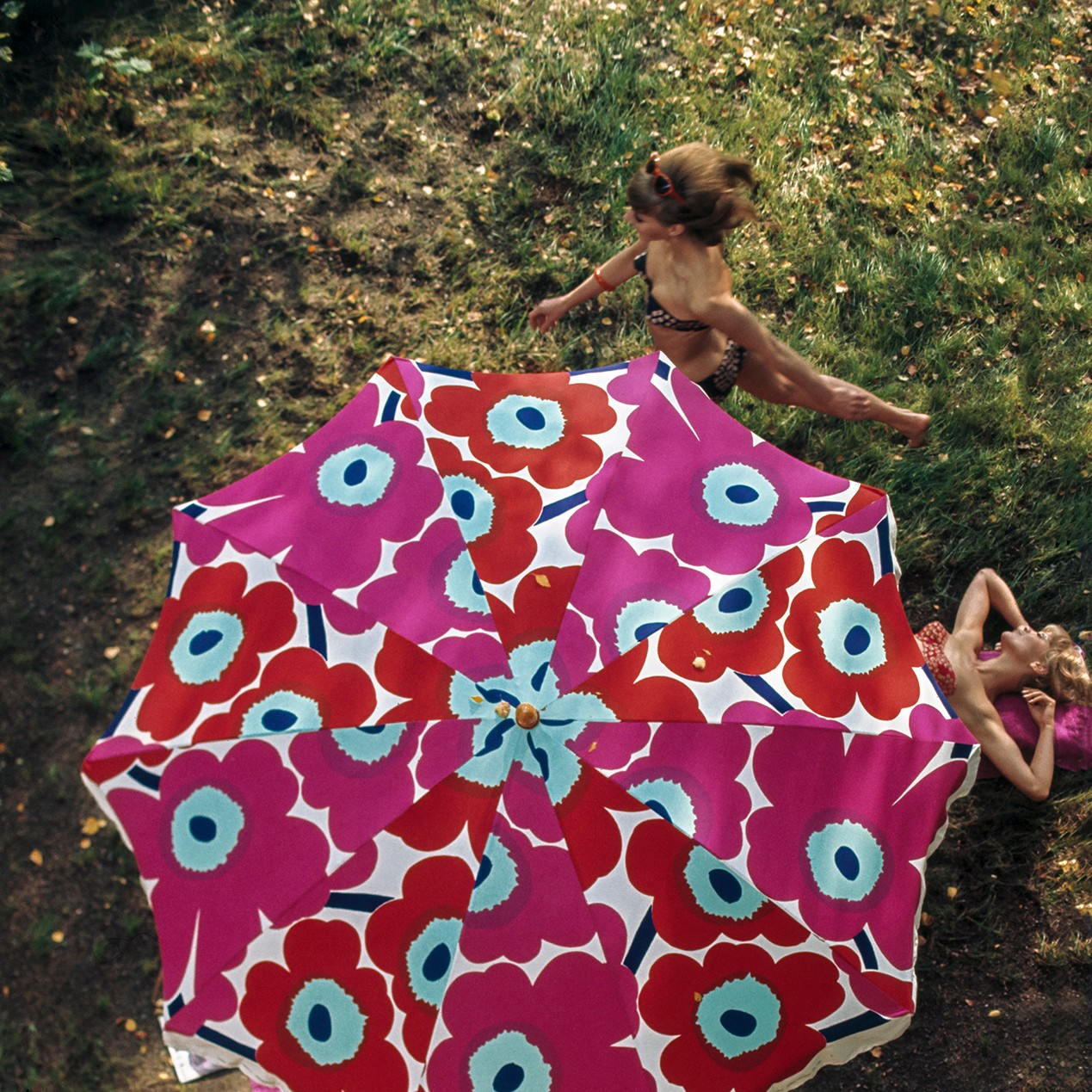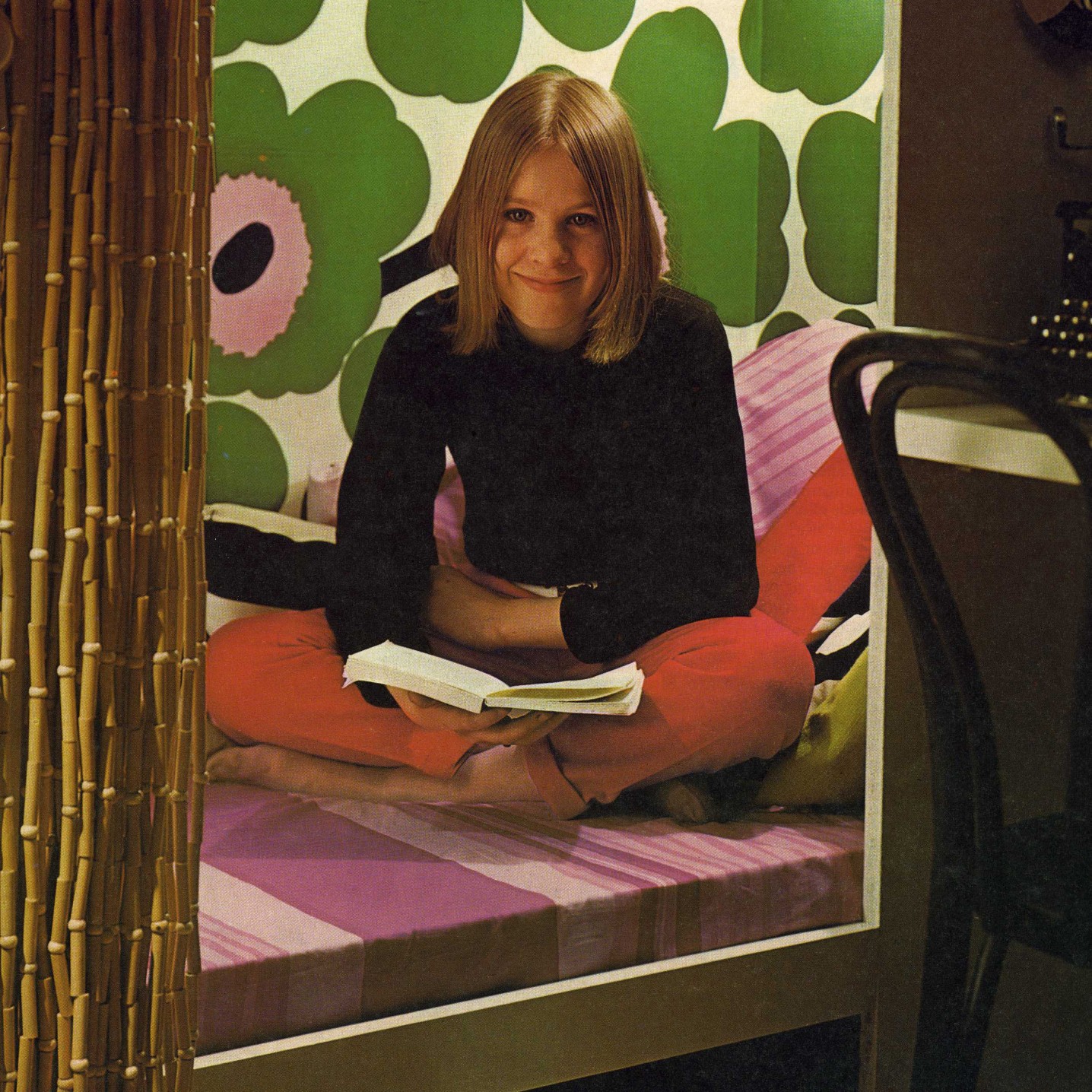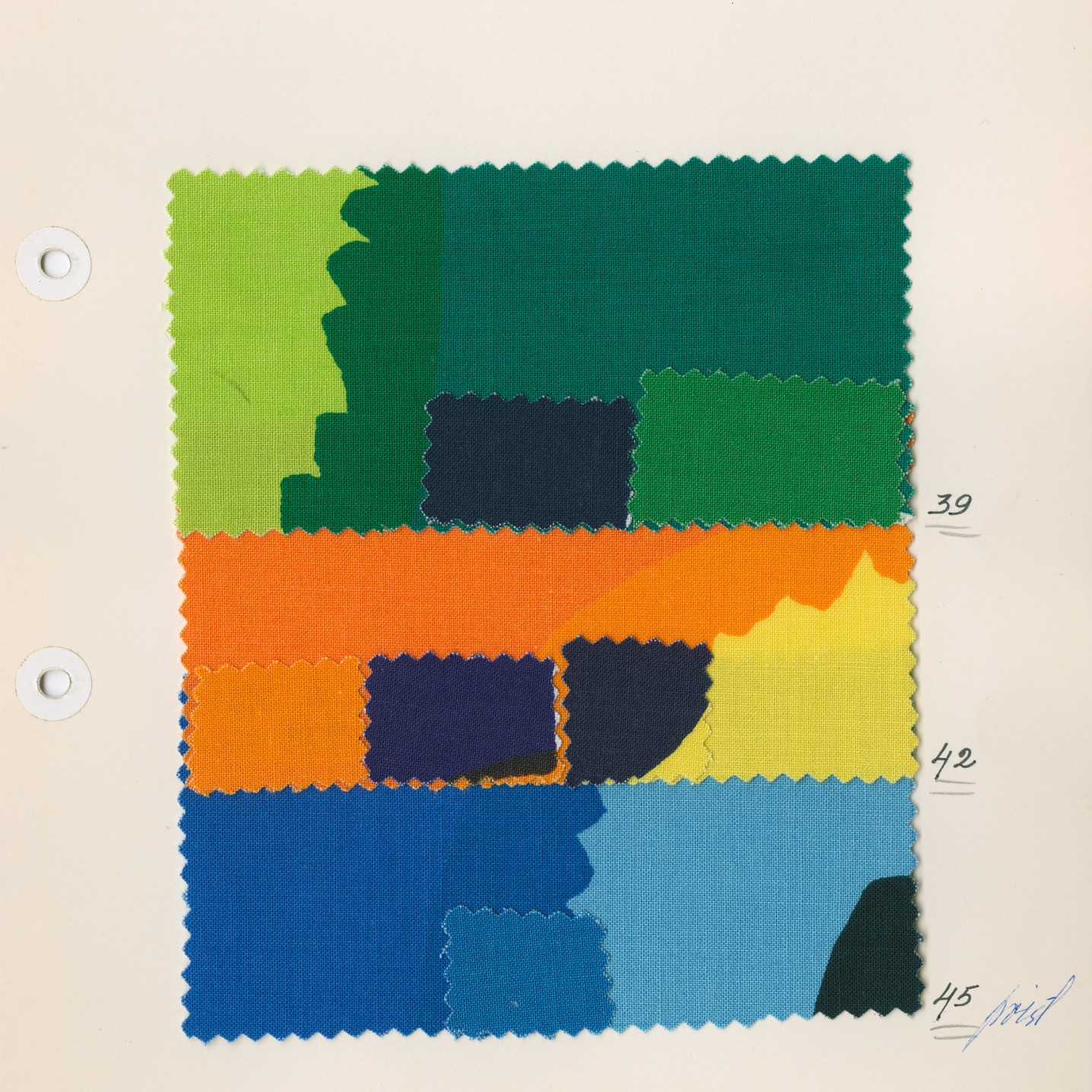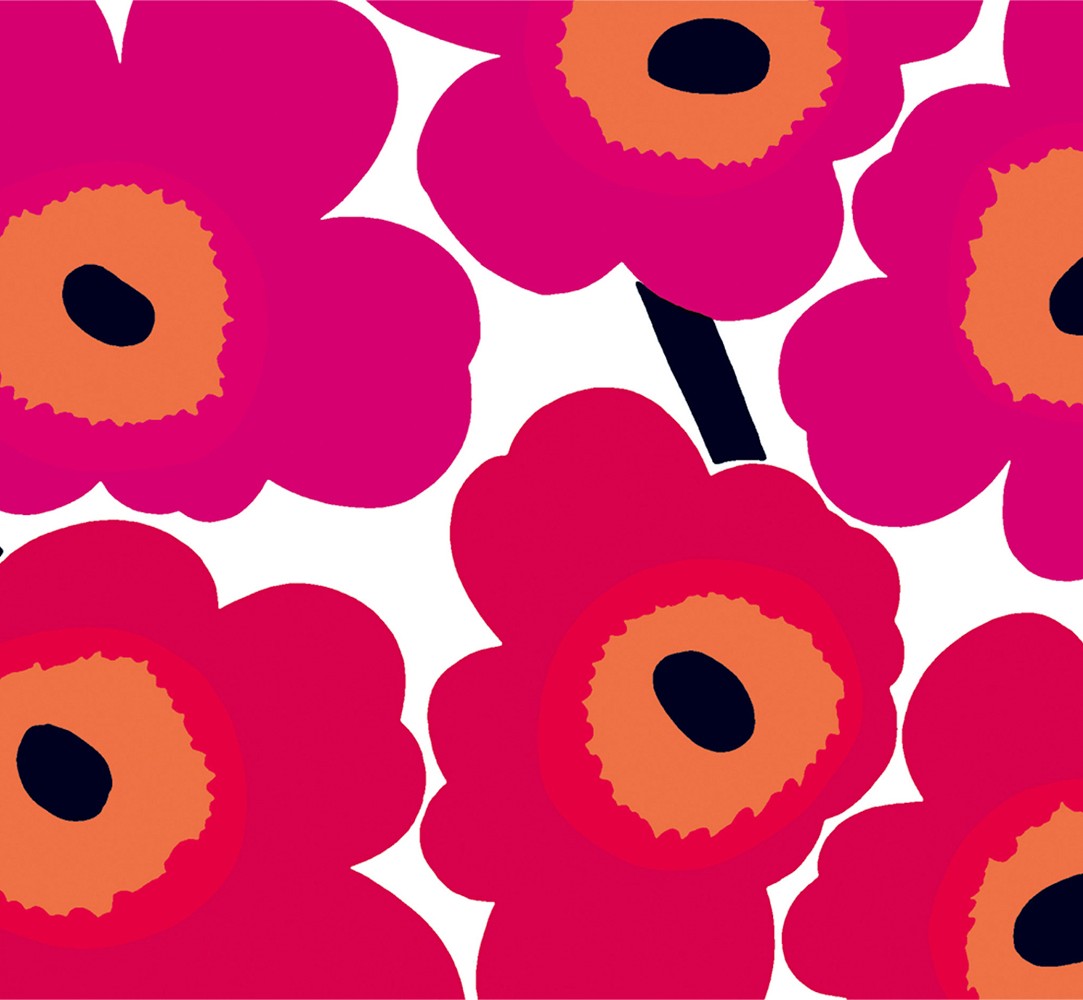
How the classic pattern was born
If you look closely, you can still see Maija Isola’s brush strokes in Unikko.
Armi Ratia loved flowers. She liked sending them to people, and often. There were always freshly cut flowers in Marimekko’s premises. However, in her opinion, there was one place where flowers simply did not work at all. Ratia led Marimekko, founded in 1951, and its designers to create something new, different and bold, and the small and conservative floral prints typical of the era were not part of that thinking. Above all, Ratia felt that it was a futile attempt to even try to represent the beauty of wild flowers on fabric.
A flower unlike anything ever seen before
Maija Isola was Marimekko’s first textile designer. She was commissioned directly after graduating from the Ateneum art school at the age of 22, and by the 1960s, Isola had already designed almost a hundred fabric patterns for Marimekko. But Isola had another, equally or even more important, career as a painter. “Industrial art requires free art on its side to stay alive,” Isola was quoted saying in a documentary directed by Leena Kilpeläinen. Themes used by Isola in her paintings were often also present in her prints. Different types of work gave impulses to each other, and nature was a recurring theme for Isola.
Isola was in the habit of painting Marimekko’s patterns in the full width of the fabric, in their actual size. The large bolts needed plenty of space when they were spread out and new patterns were presented to Ratia. In the spring of 1964, the bolts revealed a full collection of only floral patterns. Among them was Unikko.
It was a flower unlike anything ever seen before at Marimekko. The giant, juicy red and pink petals filled the white base. Dark blue stems and eyes added rhythm to the color surface. The pattern was simultaneously simplified yet exuberant.
In art terms, Unikko was graphic and avant-garde, and it was included in the collections immediately. It would take another 36 years before Unikko would be used in clothing, but magazines’ interior design pages bloomed: Unikko was used in curtains, tablecloths, sofas and even to cover entire walls. Isola was described as “the queen of bold design” in an interior design article about Unikko.
Unikko is one of more than 500 patterns that Maija Isola designed for Marimekko during her career.
The queen of bold design
Where did Maija Isola paint Unikko? At the time, she often worked in her home in the Helsinki neighborhood of Kruununhaka. On the other hand, she also traveled a lot—she visited France, Italy, and Spain by herself. She once spent the night in a meadow in the Alps. Perhaps Unikko or the idea that led to it took seed on one of these trips.
Isola also had access to Marimekko’s premises in the evenings and nights. She would often paint sitting on the floor or at a printing table, with music playing in the background. Isola famously painted Unikko by hand. When you look at the pattern, you can almost imagine the movements of the brush and the direction of the strokes. Round petals painted freehand. There is more of an edge in the places where the brush strokes intersect.
Isola painted with both oil and gouache. The original Unikko painting has not been preserved, but the Marimekko team believes that when painting it, Isola most likely used gouache paints, which can be used to create strong, saturated surfaces. The brush must have been huge.
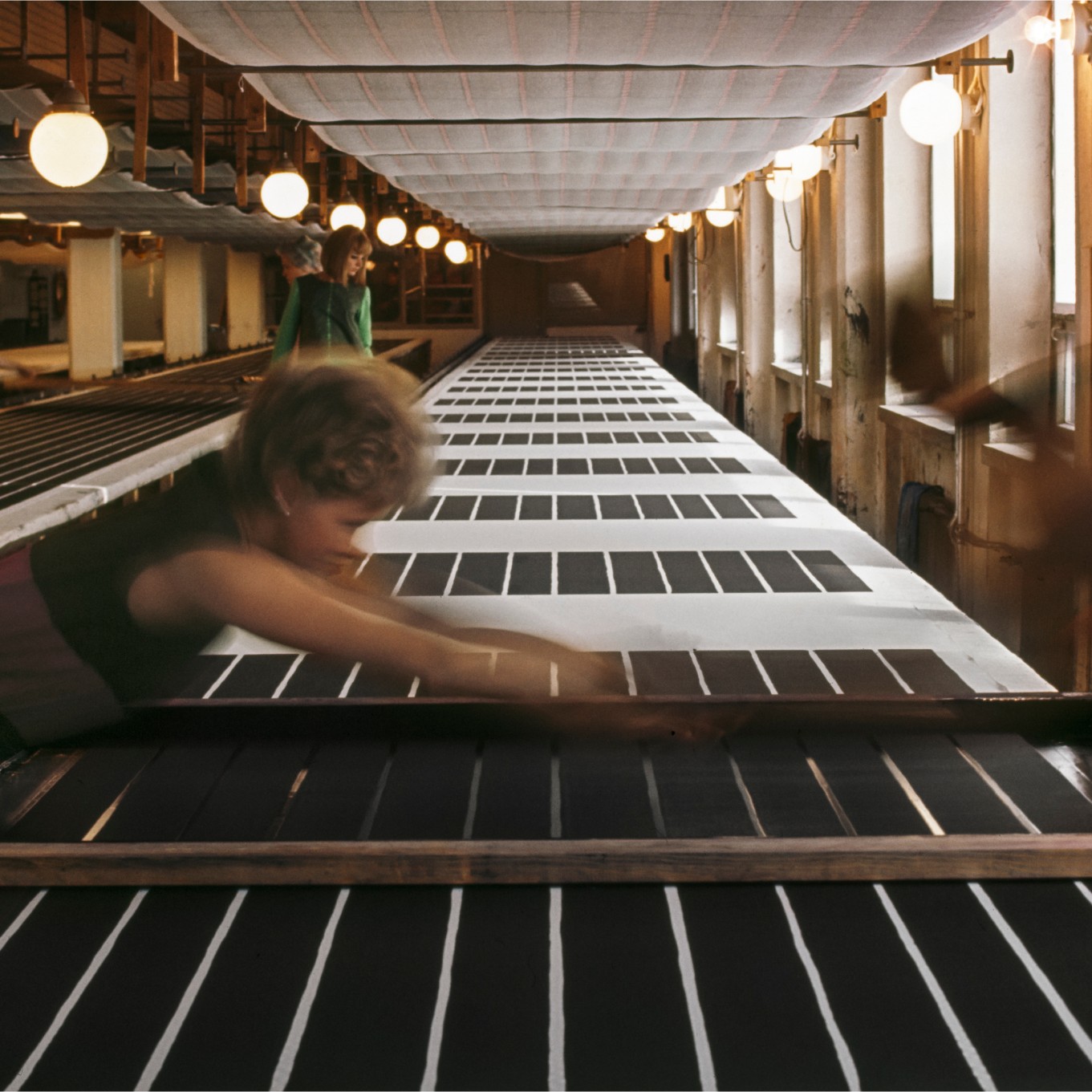
The art of printmaking
Since 1951, our designers have created over 3,500 print designs, bringing color and joy into lives and homes everywhere. Discover our design philosophy and the history of our world-renowned printmaking.

